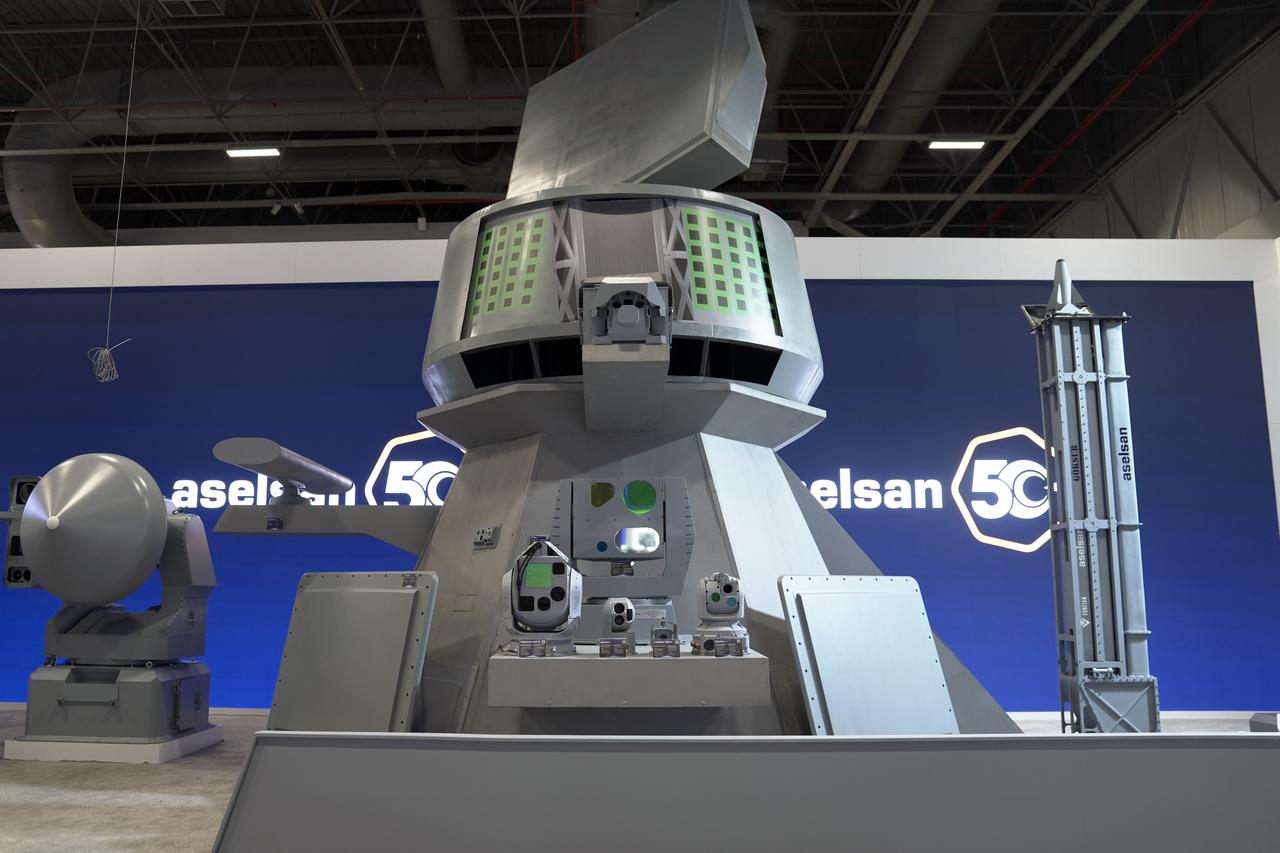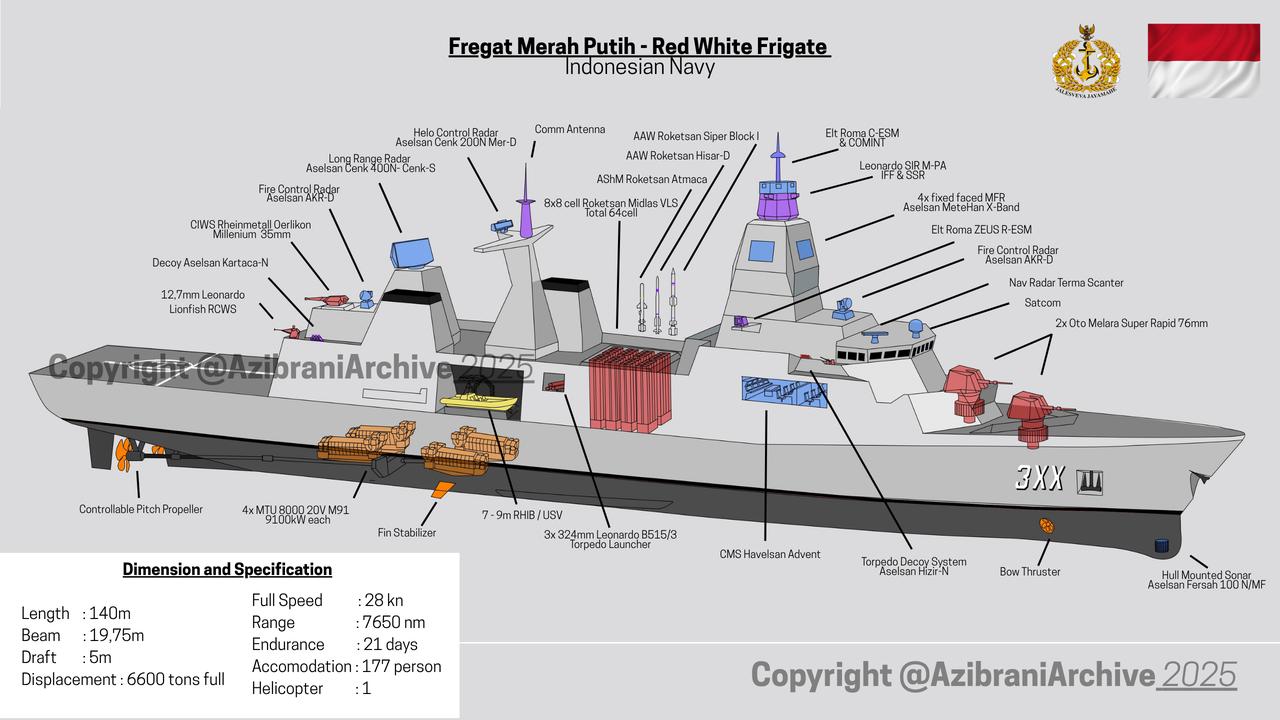
Turkish defense company Aselsan unveiled its Cenk 350-N active electronically scanned array (AESA) radar at the International Defense Industry Fair (IDEF 2025) in July, introducing a fixed-panel system designed to provide continuous 360-degree surveillance and tracking capabilities for naval assets.
The X-band radar system, featuring four fixed antenna panels mounted on ship's mast, has already secured its first export contract with Indonesia's Navy for the upcoming Merah-Putih class frigates.

The CENK 350-N addresses a specific operational requirement between Aselsan's existing naval radar systems. While the rotating CENK 400-N AESA radar currently deployed on Türkiye's Istif-class aka I-class frigates offers 400-kilometer range, it cannot maintain simultaneous coverage of all sectors.
The dual-band CAFRAD system planned for future TF-2000 destroyers provides comprehensive coverage but requires too much space and power for smaller vessels.
"On a fast attack craft you can install two of them, while on a frigate you may have a cluster of 16 or even 32 launchers," an Aselsan source told EDR Magazine regarding the Goksur vertical launch system's (VLS) scalable deployment options.
The new radar operates with an instrumented range of 250 kilometers, shorter than the CENK 400-N's capabilities. However, its constant 360-degree visibility provides superior situational awareness through higher refresh rates for target tracking and mid-course guidance of air defense missiles.
Built with Gallium Nitride (GaN) based solid-state transmit/receive modules, the CENK 350-N performs as a multi-function radar handling both air surveillance and fire control roles. Each of the four panels covers 90 degrees in azimuth and 70 degrees in elevation, collectively providing complete hemispherical coverage around the vessel.
The system incorporates advanced digital signal processing architecture, pulse compression technology, and electronic counter-countermeasures to maintain performance in heavy clutter and jamming environments. Despite some sources describing it as a "2D AESA," the radar provides full 3D tracking capabilities essential for modern air defense systems.
Primary functions include air and surface search, multi-target tracking, and weapons guidance. The radar will direct Türkiye's new GOKSUR short-range air defense missiles, which completed their first successful test from TCG Beykoz on February 16, 2025.
Indonesia emerged as the first international customer for the CENK 350-N, signing a contract in mid-2025 for the system, marketed as "Mete Han" for export markets. The Indonesian Navy's two Arrowhead-140 design frigates will feature a comprehensive Aselsan sensor suite including the CENK 350-N alongside CENK 400-N long-range AESA and CENK 200 (MAR-D) secondary radars.
This layered radar configuration provides capabilities comparable to high-end NATO warships, with the CENK 350-N serving as the core engagement radar for 360-degree coverage.
The CENK 350-N enters a competitive global market dominated by established systems like the U.S. Navy's AN/SPY-6, France's Thales Sea Fire, and the Dutch-German APAR radar. These systems share similar fixed-panel AESA architectures providing continuous 360-degree coverage.
Comparable X-band multi-function radars like Thales APAR and Israel's EL/M-2248 MF-STAR serve similar roles, providing high-refresh tracking and weapons guidance for air defense.
The CENK 350-N represents Türkiye's entry into this advanced capability segment, paving the way for AESA technology to be more accessible.
Most modern naval AESA radars employ GaN technology for improved efficiency and power output. The trend toward fixed-panel arrays reflects operational requirements for persistent coverage against fast-moving threats including sea-skimming missiles and low-observable aircraft.